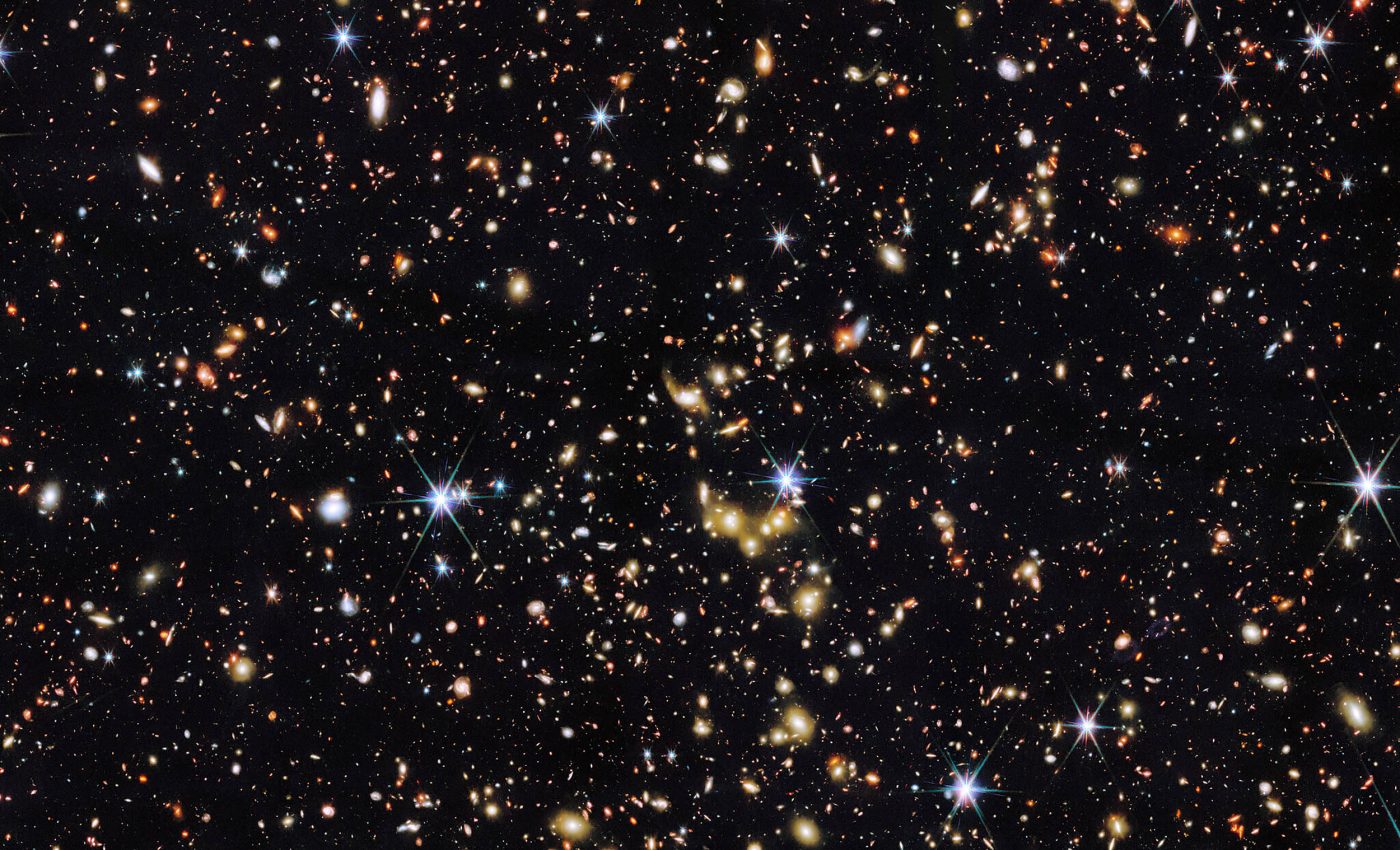
Thousands of galaxies captured in a single photograph by the Webb telescope
It is astounding how a single image can hold such a wealth of information. This new view from the James Webb Space Telescope (JWST) showcases a crowded landscape of stars and galaxies, each one shedding a little more light on the story of the universe.
The scene includes objects that lie near and far, stretching across billions of years in cosmic time.
The COSMOS-Web group, led by Dr. Ghassem Gozaliasl from the University of Helsinki, has focused on the largest concentration of galaxies seen in the central region, where a cluster dazzles with a white-gold glow.
Webb captures unknown galaxies
Scientists use the term “light-year” to describe the distance light travels in one year, roughly 5.88 trillion miles (9.46 trillion kilometers). Because light takes time to travel, instruments like Webb can glimpse conditions that existed eons ago.
Hubble and other observatories have contributed to this deep-sky survey, yet Webb’s infrared detectors are revealing structures that were previously unseen.
Observing so many diverse galaxies in a single region helps researchers trace how these mighty star cities evolve over cosmic time.
Dynamics of new galaxy clusters
Over half of all galaxies in our universe exist in groups, making these clusters valuable for understanding galactic evolution.
When galaxies interact in such close quarters, gravity can pull them into surprising shapes or even merge them altogether.
Many such groups in the COSMOS-Web sample likely formed alliances that shifted their histories forever, resulting in collisions or new star-forming bursts.
Some of these groupings are so large that they can significantly bend the path of light from objects behind them.
Researchers studying these systems piece together patterns that help explain how matter is distributed across huge stretches of space.
Galaxies in a crowded neighborhood
When galaxies live in crowded settings like groups, their environments tend to strip gas away from the outer edges. This gas loss limits future star formation and can cause galaxies to grow old faster.
Researchers have seen this process, called ram pressure stripping, in many nearby clusters.
In some cases, galaxies that pass through the dense center of a group get pulled apart by gravity or collide with neighbors.
These events often trigger sudden starbursts or reshape galaxies completely. Over time, the group’s conditions shape what each member becomes.
Detecting the glow of ancient objects
The X-ray data gathered by older telescopes captures scorching clouds of gas in these galaxy groups. That hot gas would be invisible without specialized instruments.
Separately, Hubble’s visible and infrared images capture stars within closer galaxies and the shimmering cores of far-off ones.
Webb pushes even deeper by detecting the faint infrared glow from ancient objects that might otherwise slip by unnoticed.
Scientists compare all these observations to identify each galaxy’s distance, shape, and star content. Younger stars shine with a bright blue appearance, while older stars glow red.
“The more distant a galaxy, the redder it appears,” noted the COSMOS-Web team. Each color variation helps confirm ages and reveals star formation rates across vast eras.
A glimpse of the early universe
The COSMOS-Web initiative spans 0.54 square degrees of sky, which may sound small, but it covers an area over twice the size of three full moons put side by side.
This 255-hour program employs Webb’s Near-InfraRed Camera to gather data that can support multiple studies on galaxy assembly, dark matter, and star formation.
Researchers want to pinpoint galaxies born during the epoch of reionization, a critical era when early stars reionized hydrogen in the young universe.

This project also seeks insights on how the mass of a galaxy’s stars connects with the mass of its broader galactic halo.
Unraveling that relationship can illuminate how galaxies stay stable and where new stars might spring up. While many questions remain open, this collaborative effort has enlarged our ability to examine the vast landscape of space.
Galaxies change over time
The sheer variety of galactic forms in Webb’s new image stands out. Some swirl elegantly with spiral arms, others are smooth like bright blobs, and still others appear to interact or overlap in intricate ways.
Each arrangement tells a story of turbulence, star birth, or gravitational tug-of-war that shaped its final outline.
Astronomers track these structural clues to see how galaxies change with time. Observing group environments is part of that puzzle.
When multiple galaxies crowd together, they can share resources or disrupt one another’s development, adding layers to the cosmic tapestry unfolding across billions of light-years.
Future research on galaxy evolution
Future research will keep refining distance measurements, star formation histories, and the distribution of dark matter across these new galactic groupings.
Webb is already inspiring new hypotheses about how quickly galaxies reach maturity, and fresh data can confirm or correct these early models.
Experts rely on synergy among instruments like the NASA/ESA Hubble Space Telescope, NASA’s Chandra X-ray Observatory, and ESA’s XMM-Newton, making each mission’s contribution vital.
Piecing together all of these perspectives enriches our understanding of the galactic web that stretches beyond our home in the Milky Way.
You can find more photos from this study on the ESA website here…
Image Credit: ESA
—–
Like what you read? Subscribe to our newsletter for engaging articles, exclusive content, and the latest updates.
Check us out on EarthSnap, a free app brought to you by Eric Ralls and Earth.com.
—–













